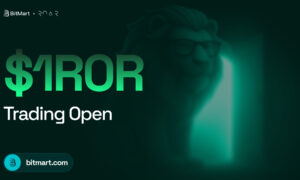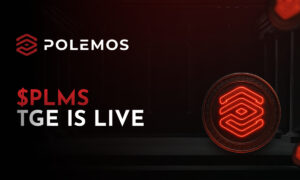Unless you’ve been living in a cave for the last nine months, you’ve probably heard about the NFT space boom. CryptoPunks (which were handed out for free to everyone with an ETH wallet in 2017) is now worth more than $7 million USD. Christie’s auctioned the most valuable NFT ever for almost $70 million USD earlier this year.
With over $1.25 billion in NFT sales in Q2 2021, it’s fair to conclude that this asset class is here to stay. It’s also apparent that, although there’s a lot of money to be made in the NFT market, it’s not always clear what makes one NFT valuable and another just digital inventory.
While the NFTs that sold for millions of dollars may have piqued your interest, the average price of an NFT is just $120 USD. Let’s take a look at some of the key areas where NFT’s perceived value may be found while making a purchase.
NFT value is built on concepts.
Use-Cases
Within the context of NFTs, utility is one of the most fiercely debated issues in the broader crypto world. Is there anything it does that goes beyond its anticipated future value? Over the past six months, several very intriguing NFT applications have started to emerge. The usefulness of an NFT (or its anticipated future utility) plays a role in its value, whether it’s improving video games by providing scarcity and ownership to in-game loot or power-ups, or building a wrapper for several different token types inside one NFT.
Some NFTs are yield-bearing, which means they have worth beyond resale. Owning a return-generating asset will increase demand for that asset. Gamifying the yield increases the asset’s worth even more by including user involvement and attention. Synesis One, for example, makes data harvesting fun for AI language learning. Every time their term is utilized in the data farming word game, their NFTs of specific words provide the holder yield. The game is also played for profit, ensuring that the NFTs will produce profits.
Sales History
The value of an NFT is determined by the identity of the original issuer or prior owners. Those having a high ownership history value are often produced by well-known artists, celebrities, or corporations. Digital artist Beeple, who has three of the top ten NFT sales of all time, and Sir Tim Berners-Lee, who just sold an NFT of the World Wide Web code for over $5 million USD, are two examples.
When simply looking at ownership history, determining value may be challenging. Is it reasonable to expect a 10X rise in value until the artist or celebrity becomes even more renowned in the months and years ahead? The value of the NFT increases if it has been held by celebrities or famous people at some point in the past. An NFT of a collectible card used by a top player to win a major tournament, for example, will have emotional worth over a comparable card with no history.
Scarcity
NFTs have intrinsic rarity since they are one-of-a-kind by nature. However, it is becoming apparent that some are more distinctive than others. And this is what we’re talking about when we term “rare.” Let’s suppose there are 10,000 completely distinct characters in a collection, such as CryptoPunks. Some will have unique qualities, characteristics, or traits that set them apart from others in the same collection. This rarity is what causes huge price rises. The value of Jack Dorsey’s initial tweet, “Top Shots” of famous NBA footage, and Beeple’s NFT comes from their rarity, uniqueness, and visibility.
Lucky Maneki is an intriguing example of a collection that is growing in popularity while still including complicated and possibly important rarity characteristics. It’s a Japanese fortunate cat-themed NFT collection with 14,159 characters. Each one is totally unique since they are created programmatically from a mix of 410 variable features. Certain Manekis are born with “fortunate” mutations that make them more uncommon than others, allowing them to be classified as either rare or Epic Manekis. If you can get your hands on one of the genuine rarities, you can be sure that your investment will appreciate significantly.
Liquid Options
An NFT with high liquidity has a greater value. The liquidity premium is the primary reason why tokens created on the Ethereum blockchain have a greater value than tokens created off-chain. Anyone with ETH may easily trade ERC standard NFTs across secondary marketplaces. However, if the market for your particular NFT or NFT collection is not bought, you may have liquidity issues. To put it another way, if no one wants to purchase your asset, you won’t be able to sell it. At least not at the price you’re looking for.
Investing in NFT assets with a large trading volume is preferred by investors because liquidity reduces the risk of owning NFTs you no longer desire.
Conclusion
In the marketplace, there are millions upon millions of NFTs. One method of choosing your next NFT buy is to choose ones with good utility and history, although these may not be the most valuable for large gains. By comparing your next purchase to one or more of these pillars, you’ll have a far better chance of getting something that can be considered an asset.



































